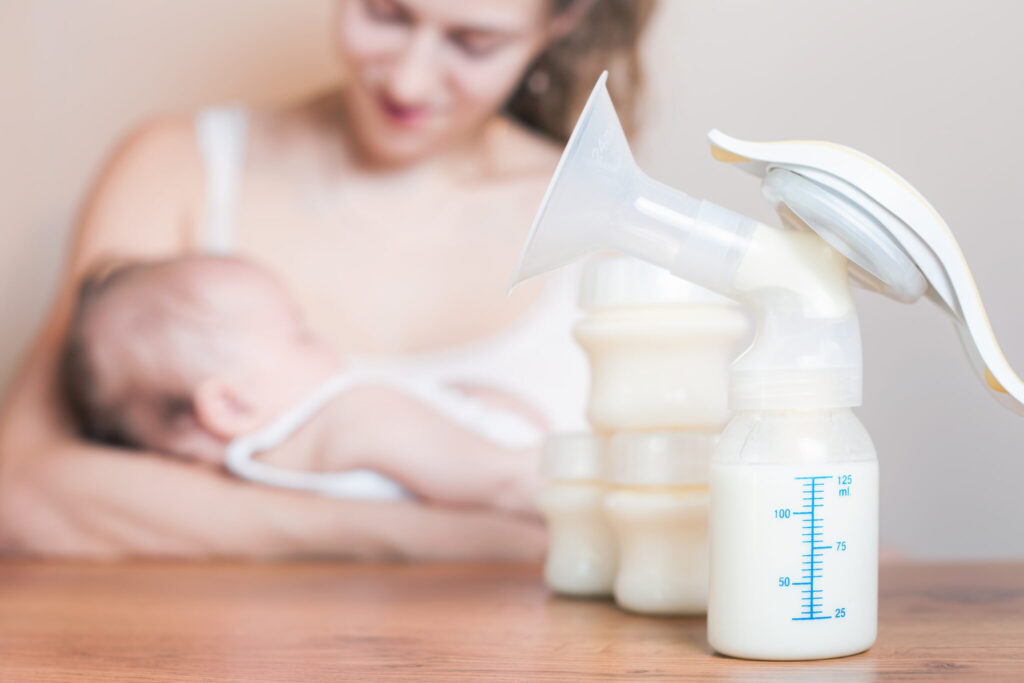 So much of breastfeeding is about confidence. It’s about having confidence in your baby’s natural need to nurse, confidence in your body’s ability to create sustenance, and confidence, or maybe just faith, in yourself that you’ll be able to push through any obstacles. Yet, for many of us, confidence is a difficult trait and adding infants to the mix doesn’t always make it easier. Still, overcoming any insecurity you may hold to nurse your baby may be one of the biggest ways to increase your feelings of self-worth. How do you push through even the most difficult moments of breastfeeding? You answer any doubts with facts.
So much of breastfeeding is about confidence. It’s about having confidence in your baby’s natural need to nurse, confidence in your body’s ability to create sustenance, and confidence, or maybe just faith, in yourself that you’ll be able to push through any obstacles. Yet, for many of us, confidence is a difficult trait and adding infants to the mix doesn’t always make it easier. Still, overcoming any insecurity you may hold to nurse your baby may be one of the biggest ways to increase your feelings of self-worth. How do you push through even the most difficult moments of breastfeeding? You answer any doubts with facts.
If you’ve breastfed before or have worked with breastfeeding mothers, you’ve probably been asked this very basic breastfeeding question: How do I know if my baby is getting enough milk? It’s a tough question for some because there is a knee-jerk reaction to just answer with, “you don’t, but my kids turned out okay!” For mothers used to fine measurements and factual answers, that just won’t cut it.
It’s easy to understand why moms might wonder; when you’re used to seeing bottle feeding, you’ve grown accustomed to being provided with a measurable way to know exactly what your baby is taking in. When you’ve put 3 ounces of milk in a bottle and your baby finishes two-thirds of that bottle, you easily understand that your baby has had two ounces. Breastfeeding is a bit more difficult. There’s no glass window to reassure you, no notched measurements to keep tabs on. However, it’s possible to make sure that your baby is getting enough milk. Here’s how.
Understand Breastfeeding Basics
To know that your baby is getting enough milk, you’ll first need to watch for the signs that they’ve had enough to eat and are good and full. You’ll first notice your baby closing their lips, turning their head away from the breast, slowing or quitting suckling or even spitting out the nipple. They may also fall asleep or start showing increasing interest in their environment.
In the beginning, your newborn may fall asleep frequently. When this happens, try burping him over your shoulder and then offering the other breast. If he is still sleepy, he’s full. Offer the other breast at the beginning of the next feeding.
How Long Should a Breastfeeding Session Last?
The length of time a baby needs to nurse really varies from child to child. Usually, a breastfeeding session will last about twenty to forty-five minutes, although, as mentioned before, newborn babies may have trouble staying awake for these long sessions. Instead they may nurse a bit more frequently and for shorter periods. Generally, you’ll be nursing about eight to twelve times a day while your baby is a newborn. That’s around every one and a half to three hours.
How do I know that, after these nursing sessions, that my baby is getting enough milk?
The easiest, measurable way to evaluate whether or not your baby is getting enough milk is to count the number of wet diapers you are changing each day. For babies using disposable diapers, you can expect four to six wet diapers a day. For babies using cloth diapers, expect a few more because cloth diapers hold a bit less. The color of your baby’s urine is also a good indication of whether or not they are eating enough. The darker the urine, the more fluids they need. Straw colored or pale urine indicates that your baby is getting enough milk.
Another method is to use your baby’s weight as an indicator. All babies tend to lose some weight, around five to seven percent of their birth weight, the first few days after birth. After those first few days, they’ll usually gain four to seven ounces per week or one pound per month after birth.
What if I still think my baby needs more milk?
If your baby’s urine is dark or you feel as though they aren’t getting enough, try to nurse more frequently, cut out pacifiers so that your baby is encouraged to suckle the nipple more frequently, and drink plenty of water. If this doesn’t resolve the issue, talk to a lactation consultant or physician.
Your doctor will check your baby’s skin turgor, or the ability of their skin to bounce back after being pulled tight. Well hydrated skin will easily fall back into place, while a baby who is dehydrated will have skin that “tents” or doesn’t easily fall back into place.
Your child’s pediatrician will also evaluate your baby’s tongue, gums, and cheeks to check that your baby’s mouth is moist. A dehydrated or underfed baby will have dry membranes and may also be unable to make tears.
Still, it’s very rare to have an actual low-milk supply. Remember that breastfeeding is about having faith in yourself and the confidence to trust that your body knows what it is doing. Mothers have been nursing their babies since the dawn of time and we’re made to do it. You can do it too!




Leave a Reply